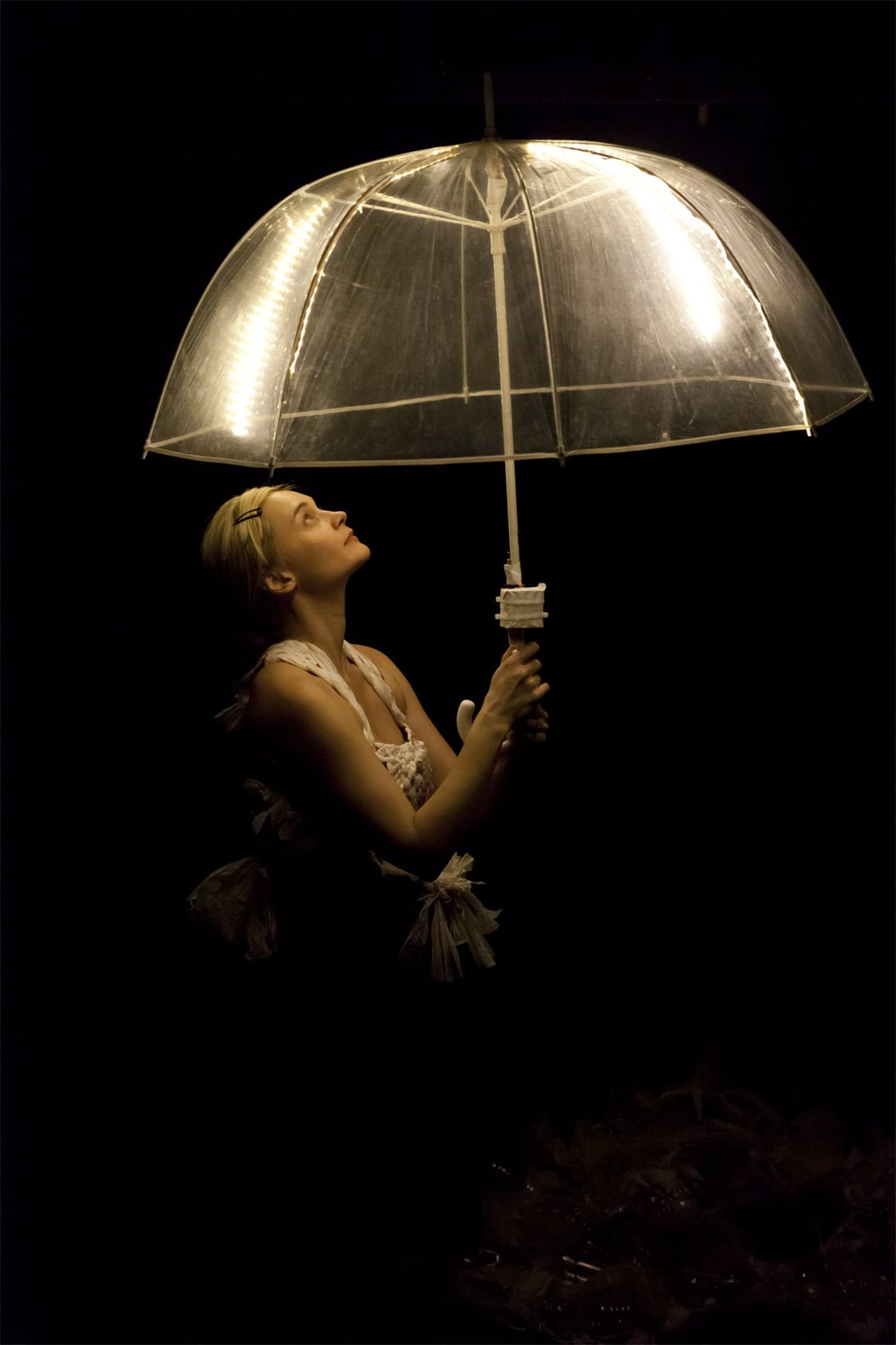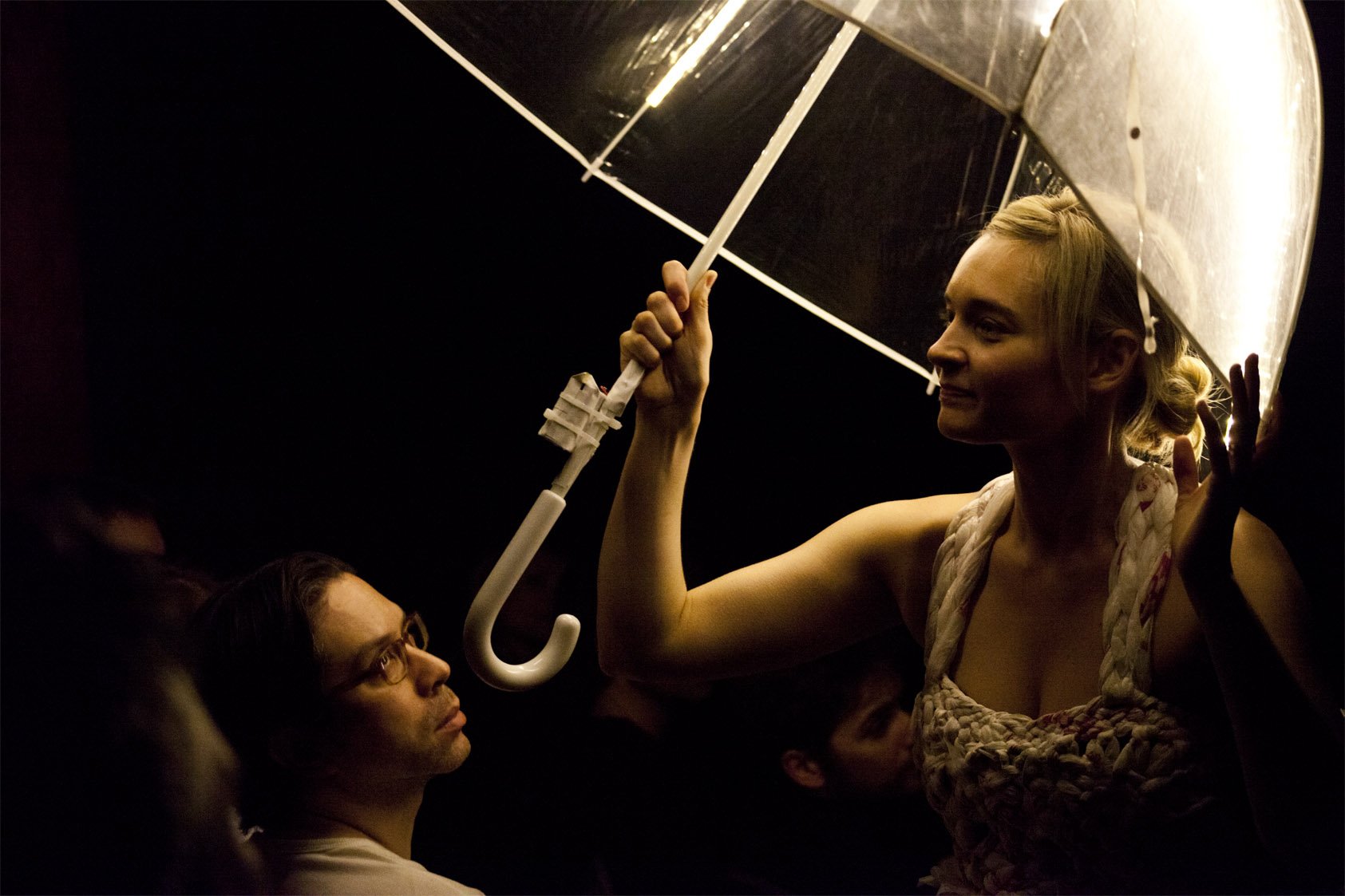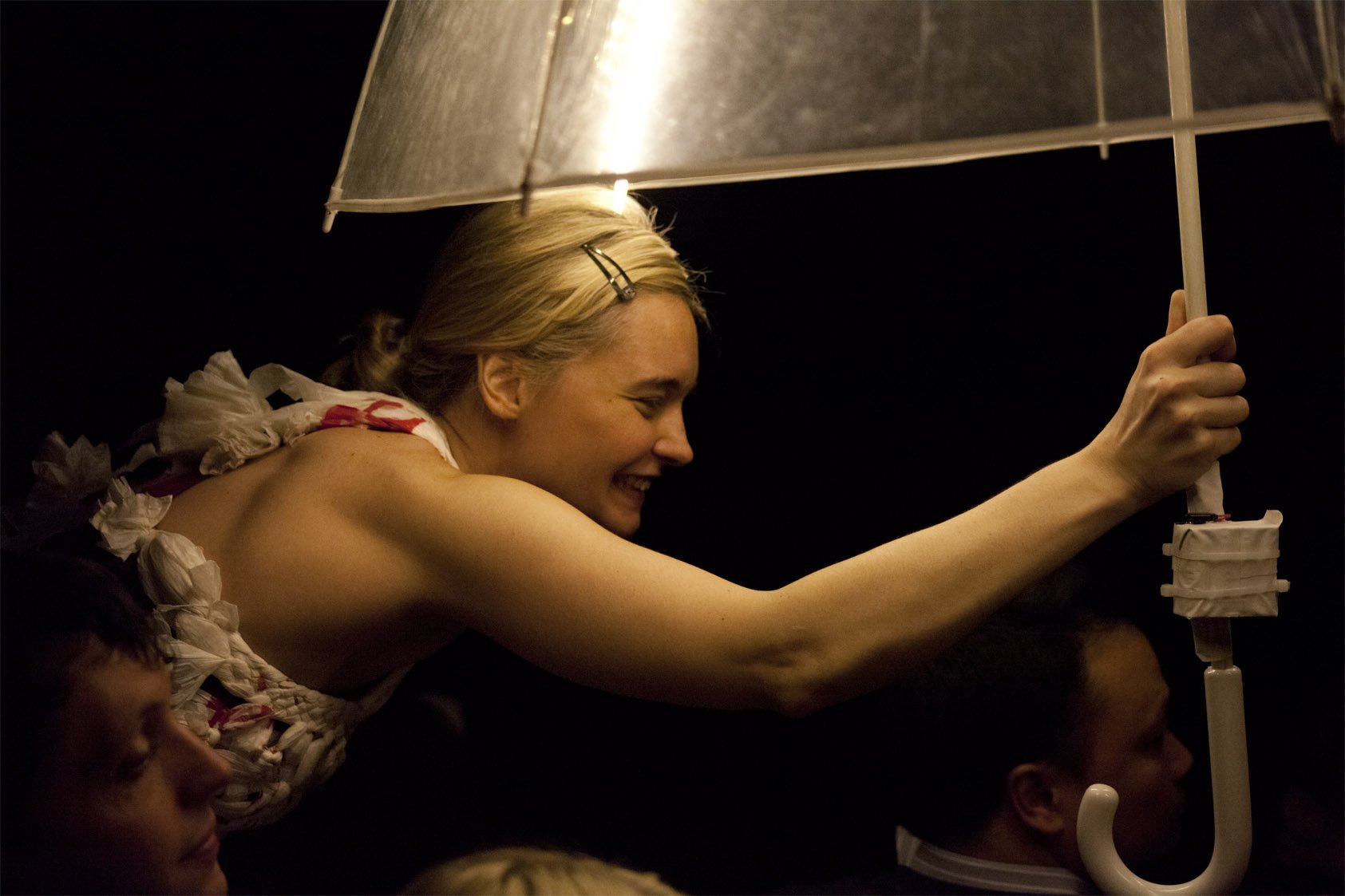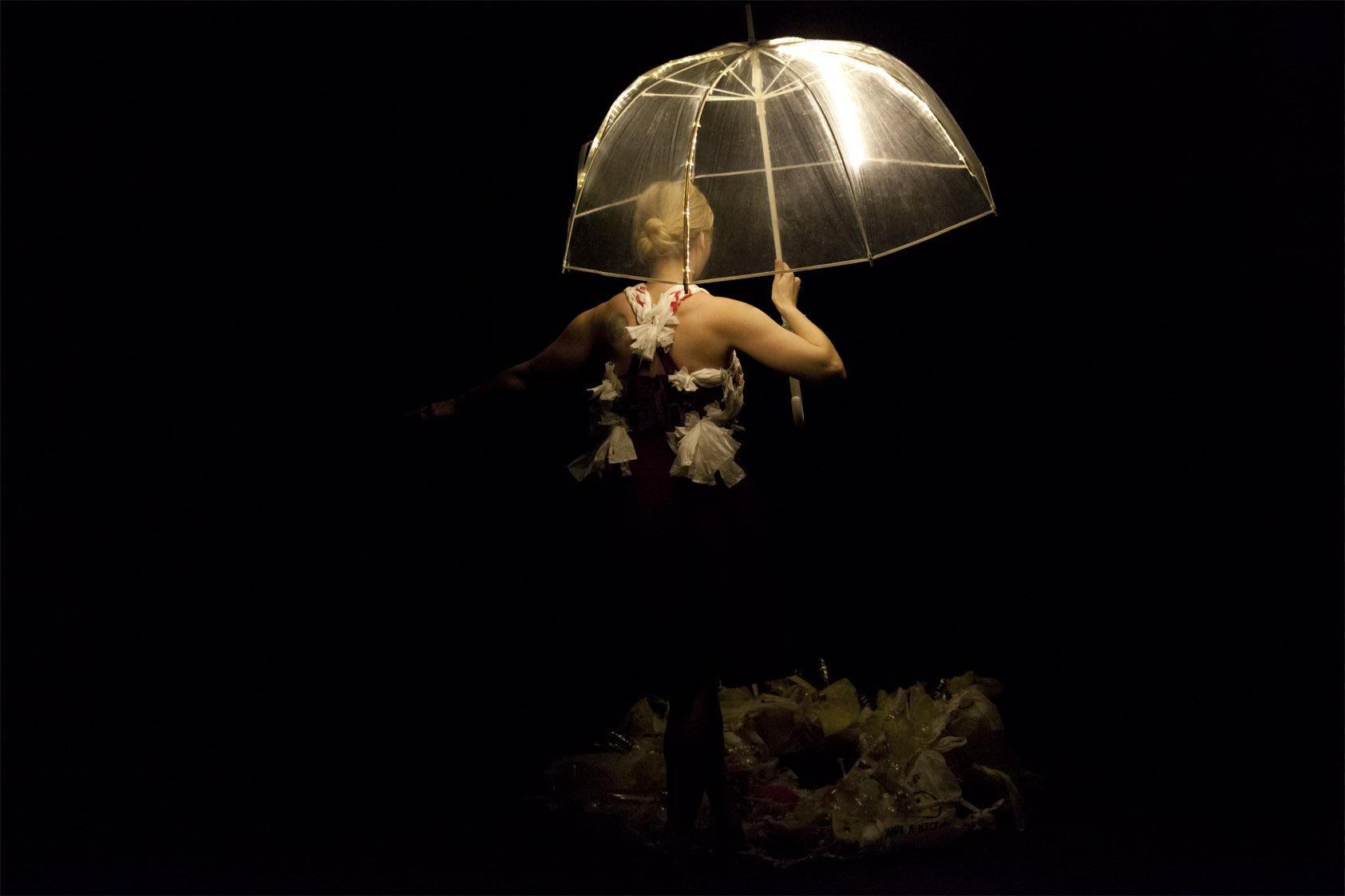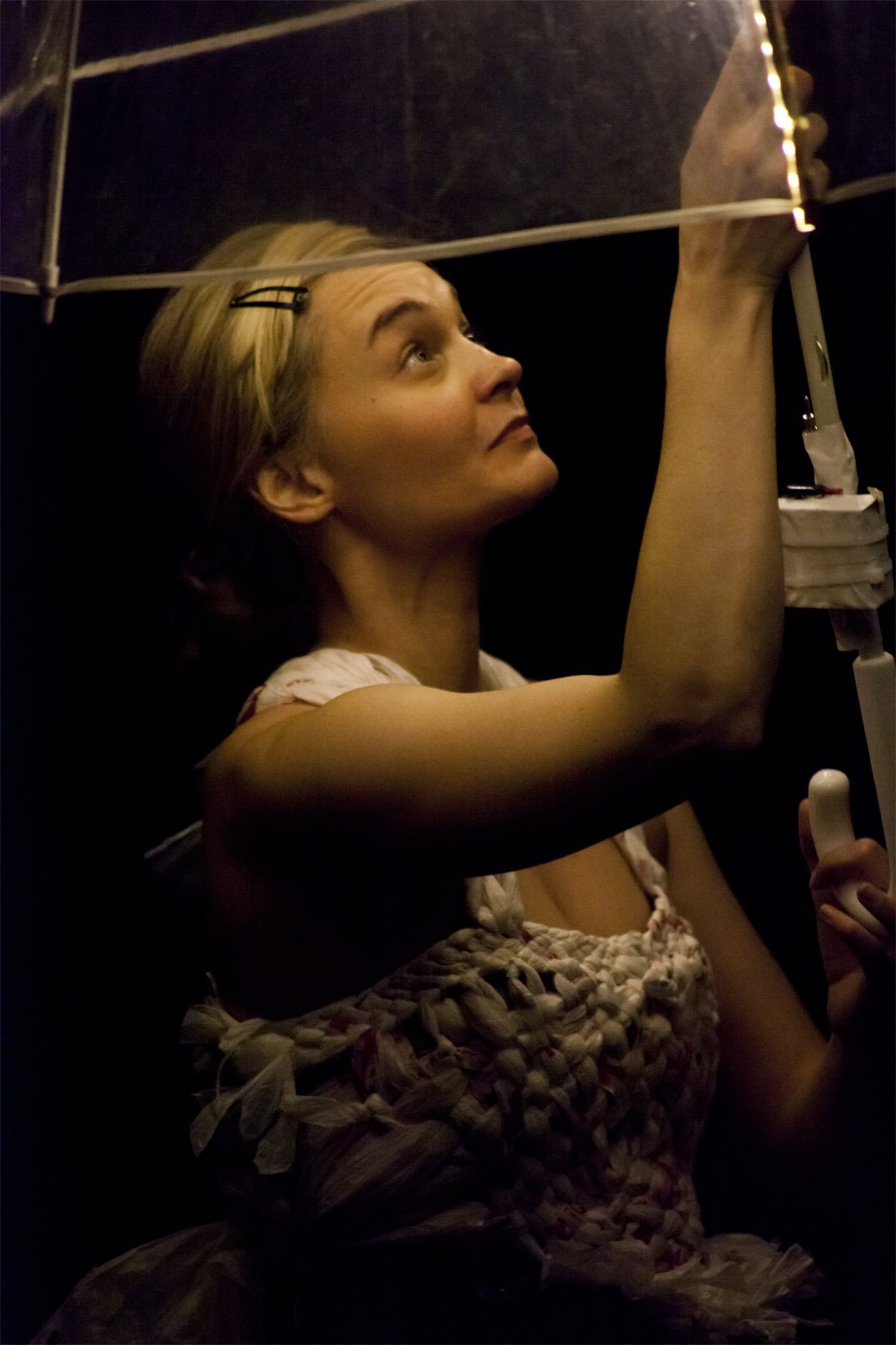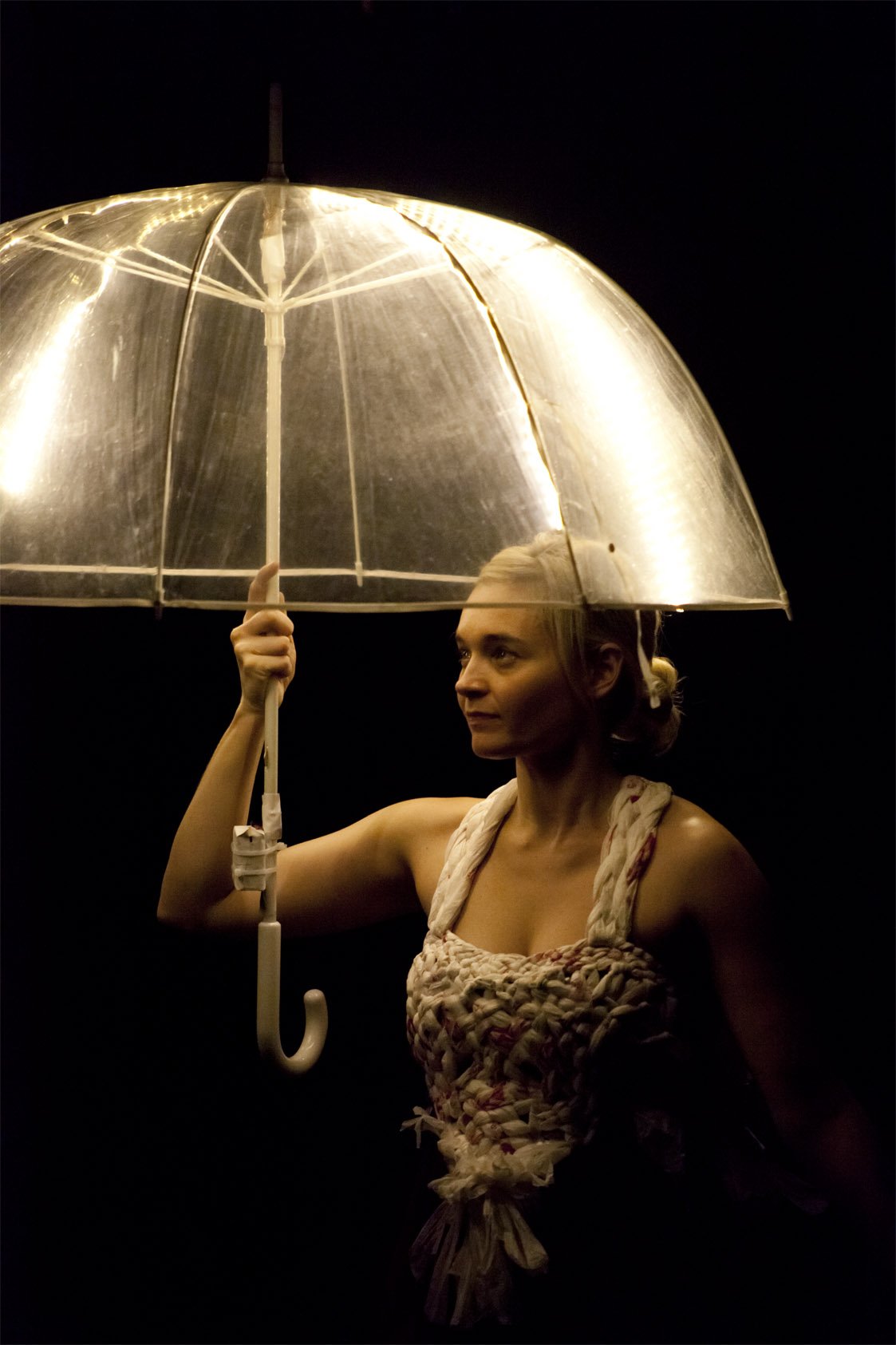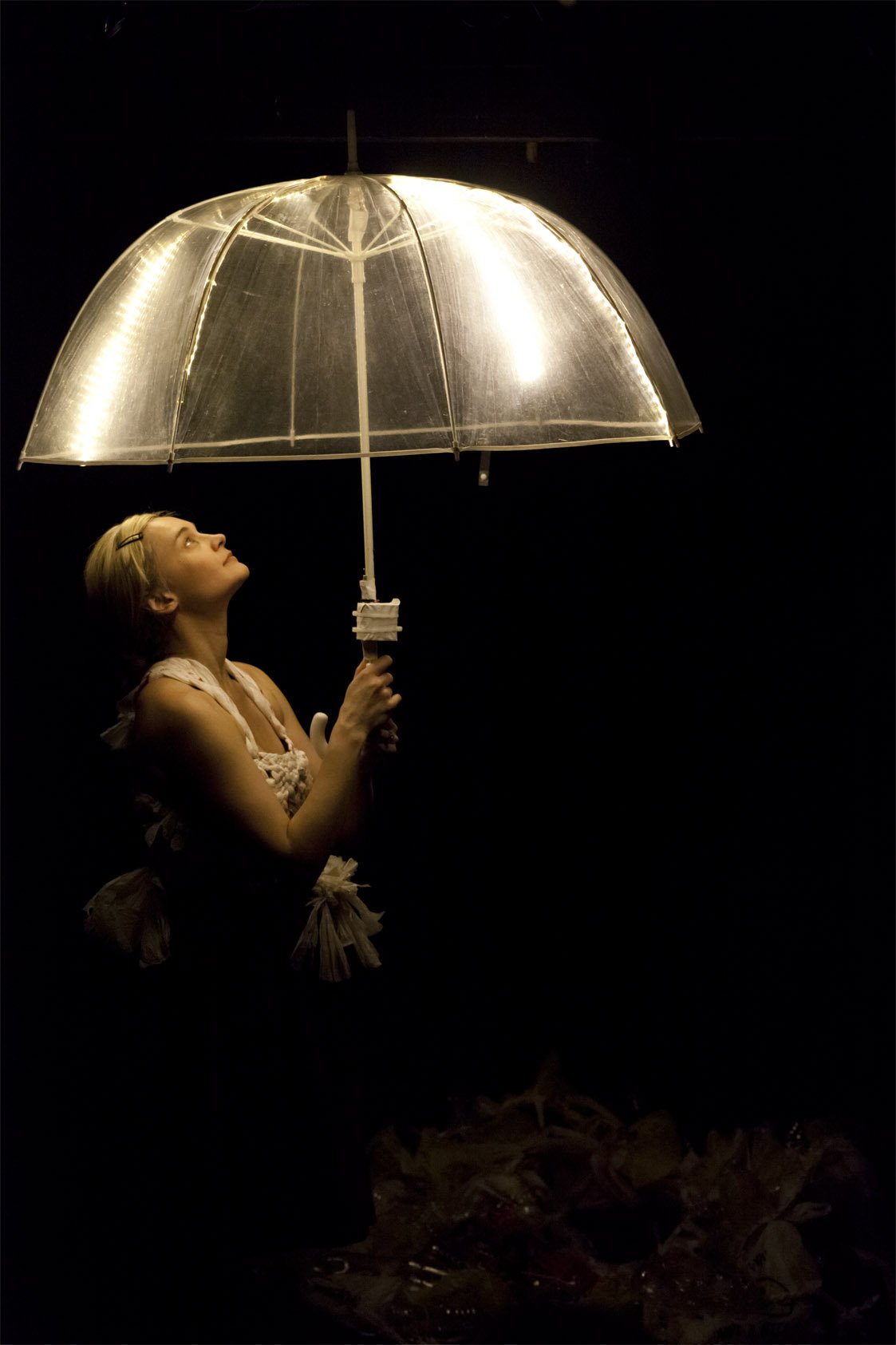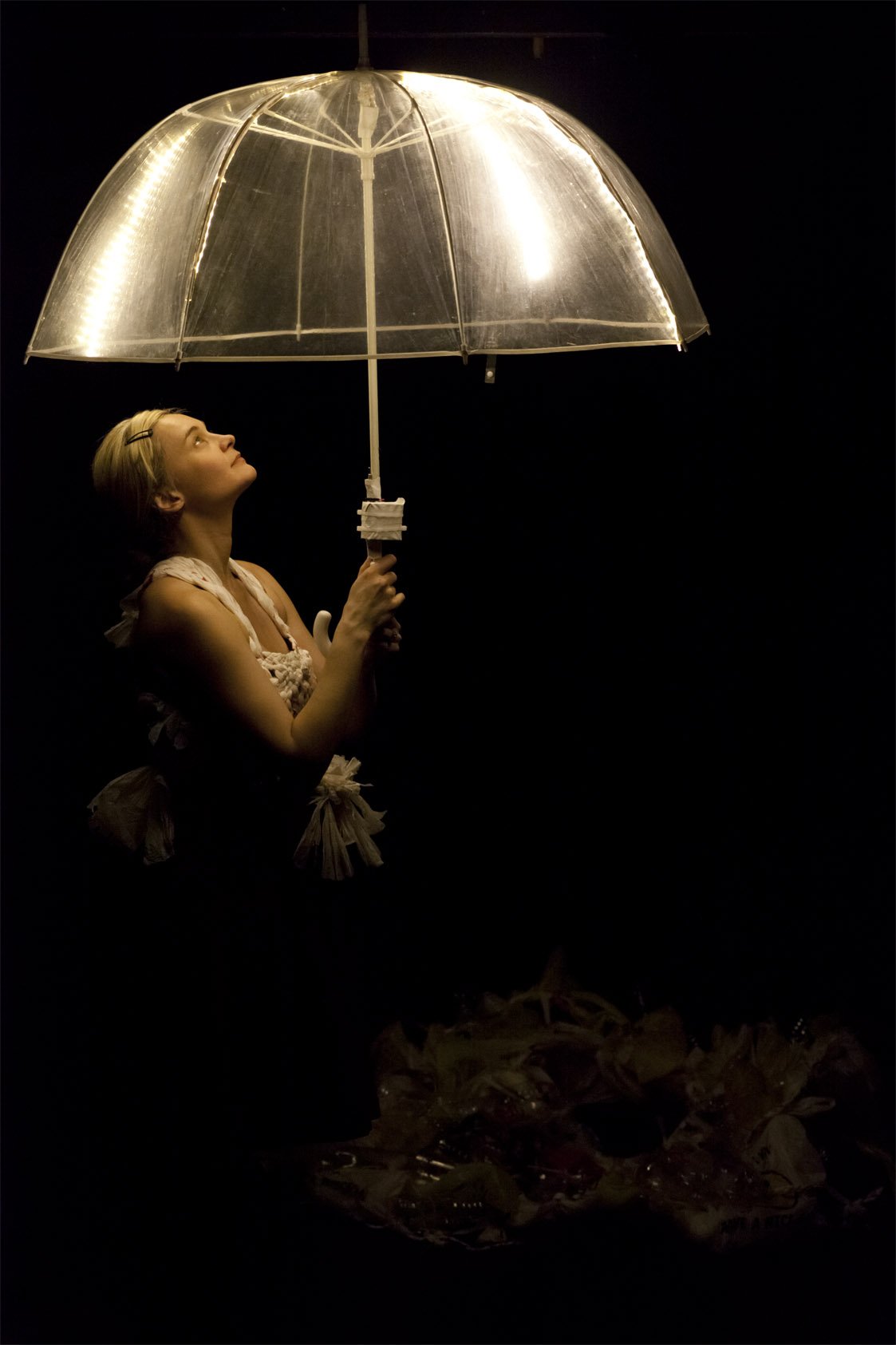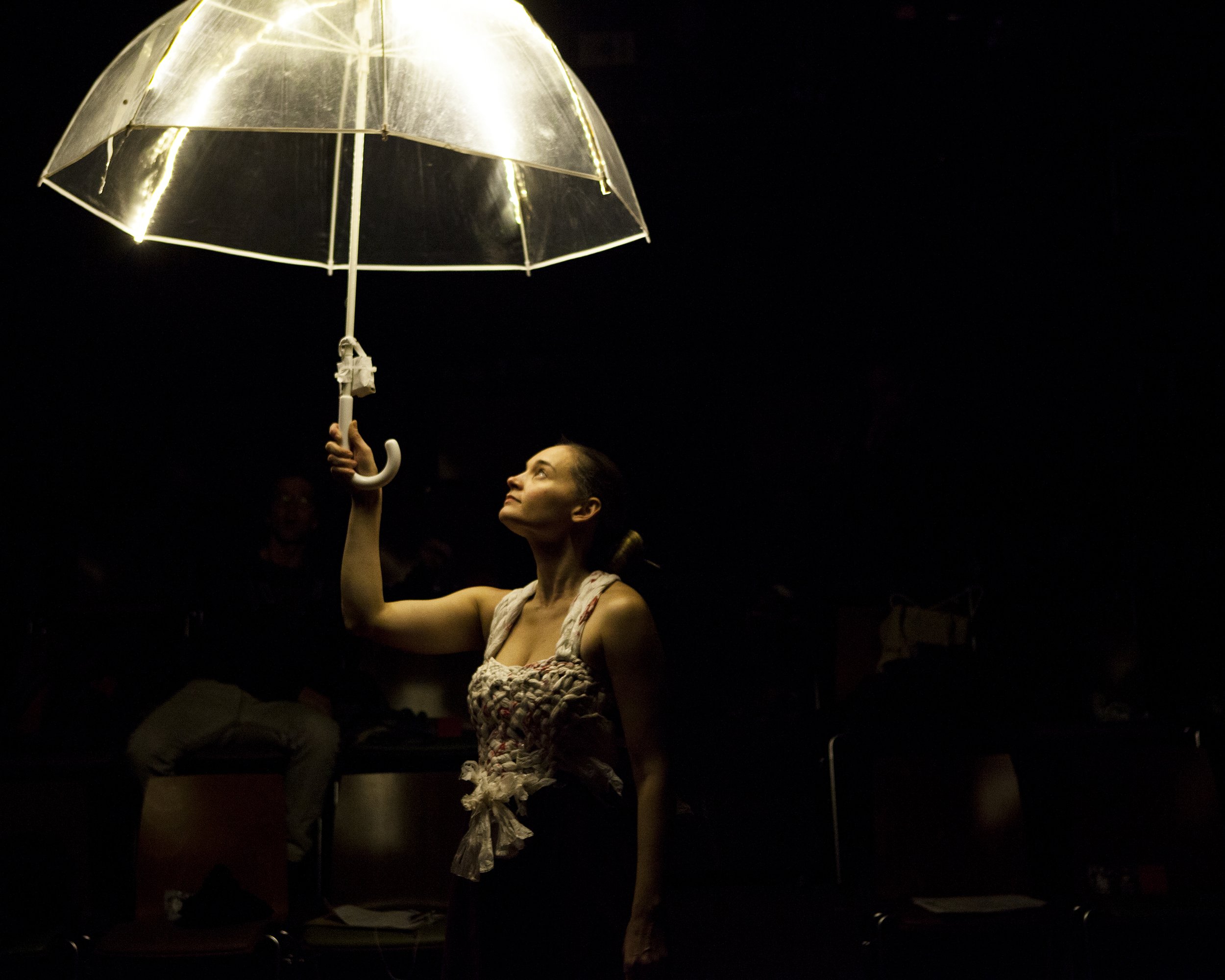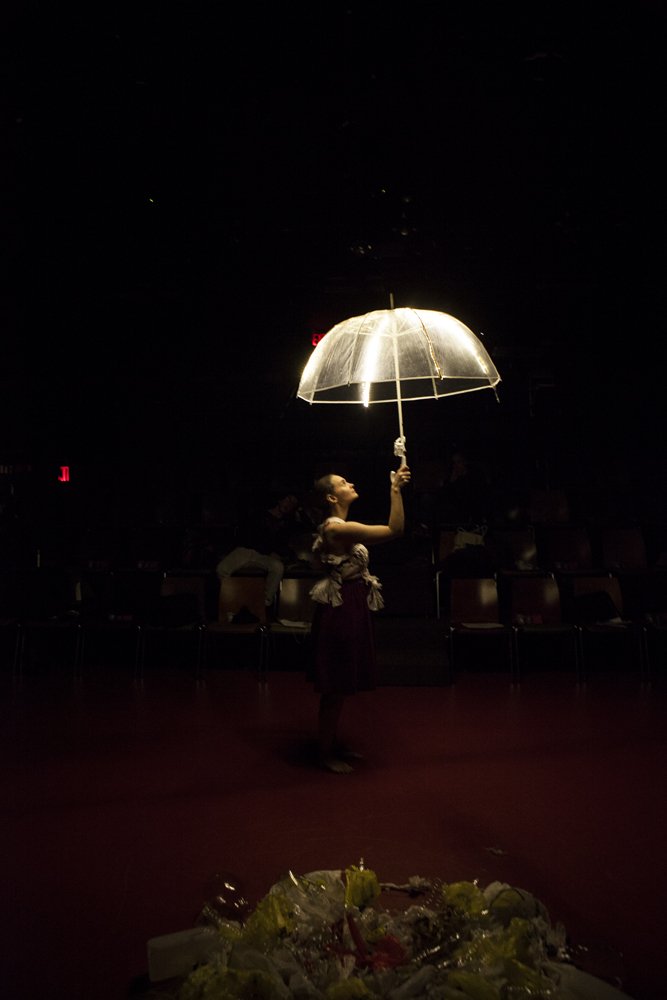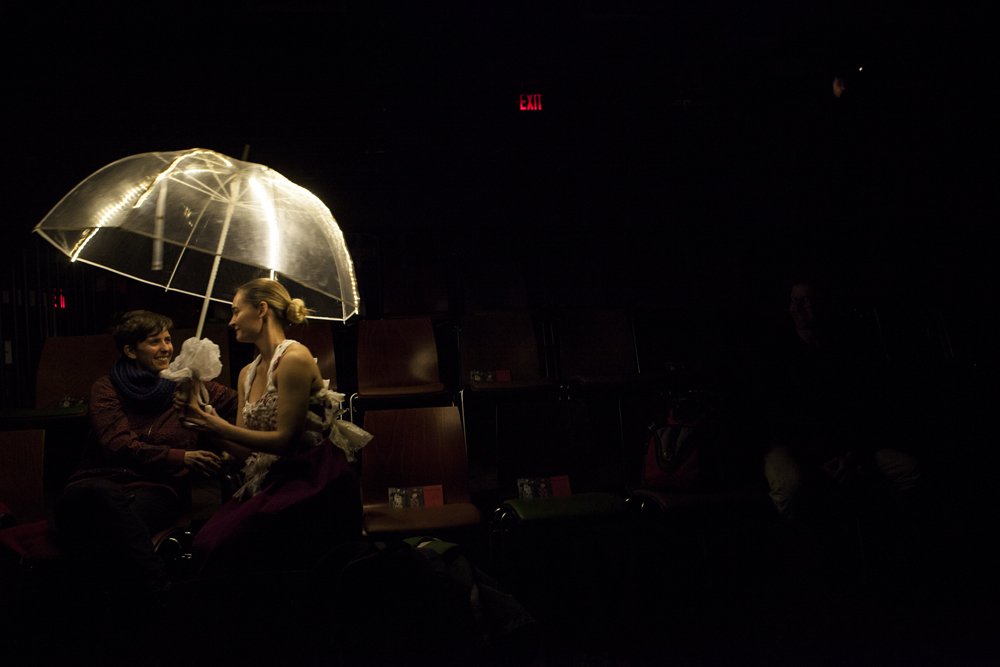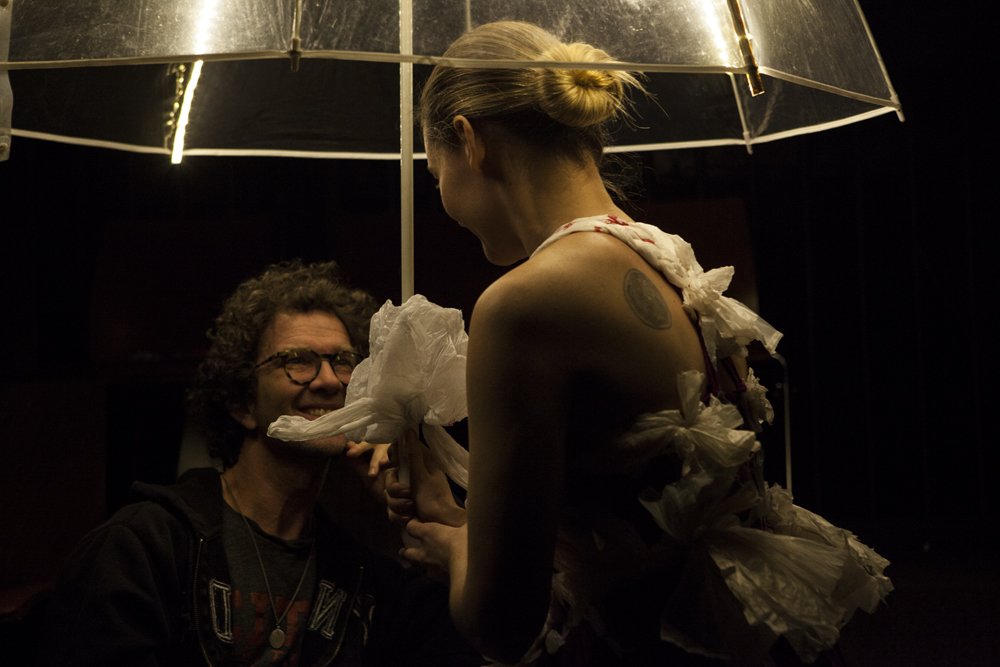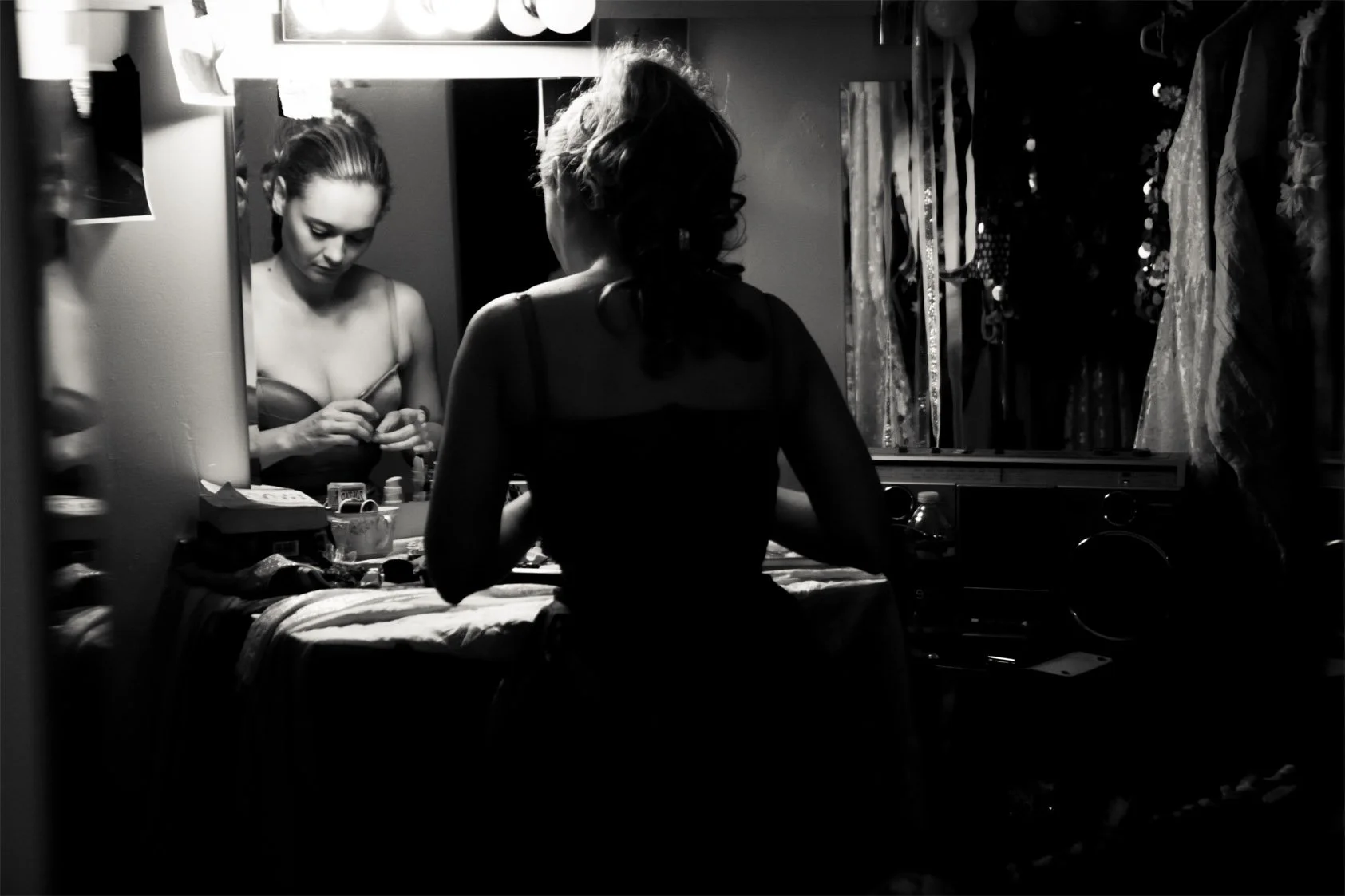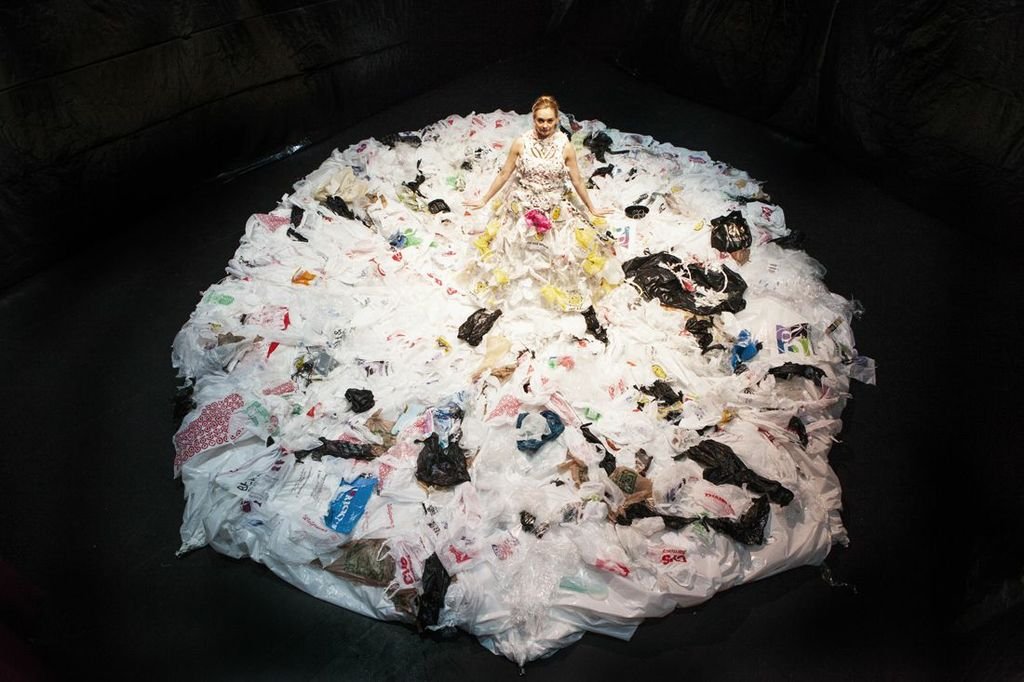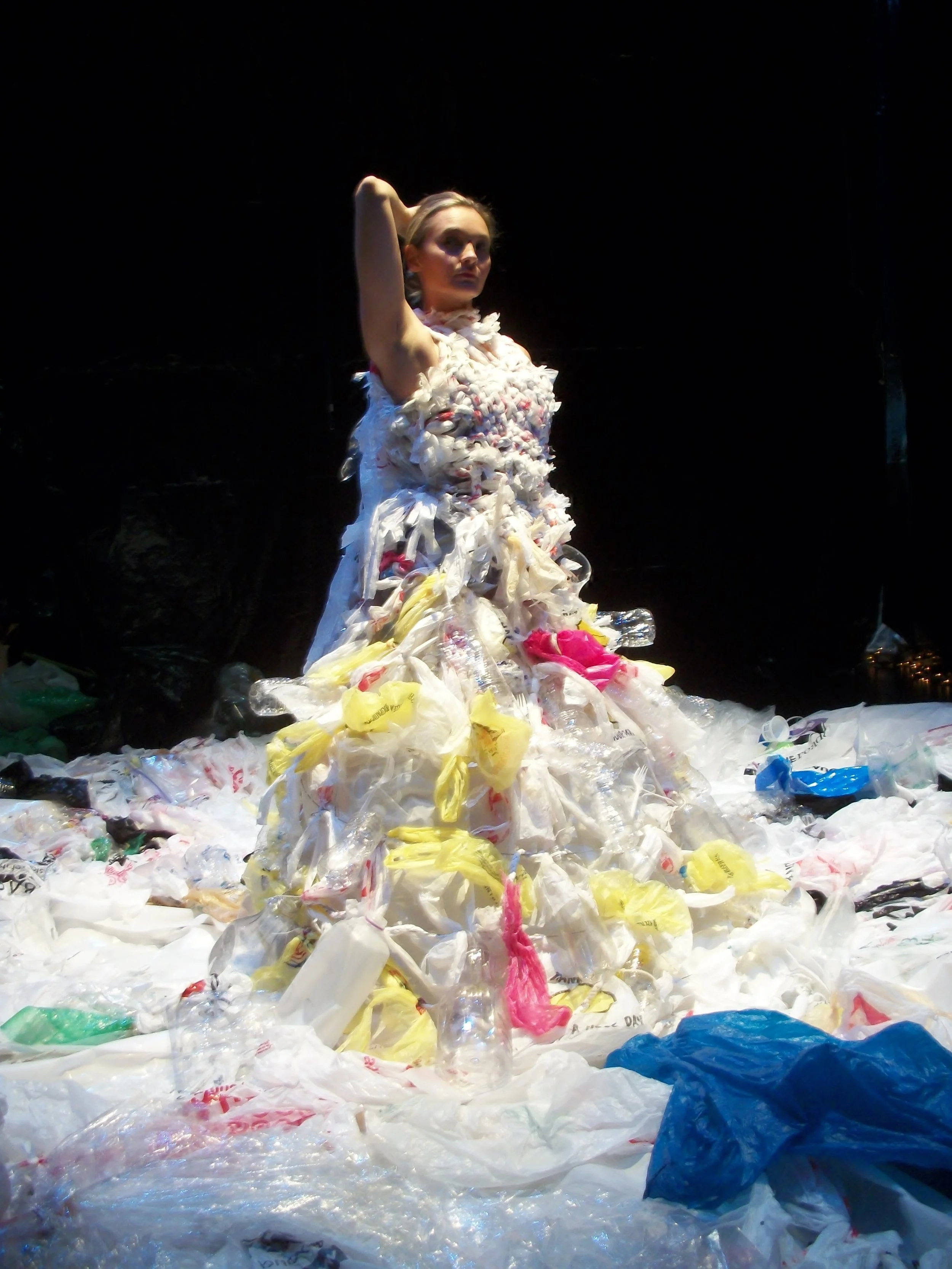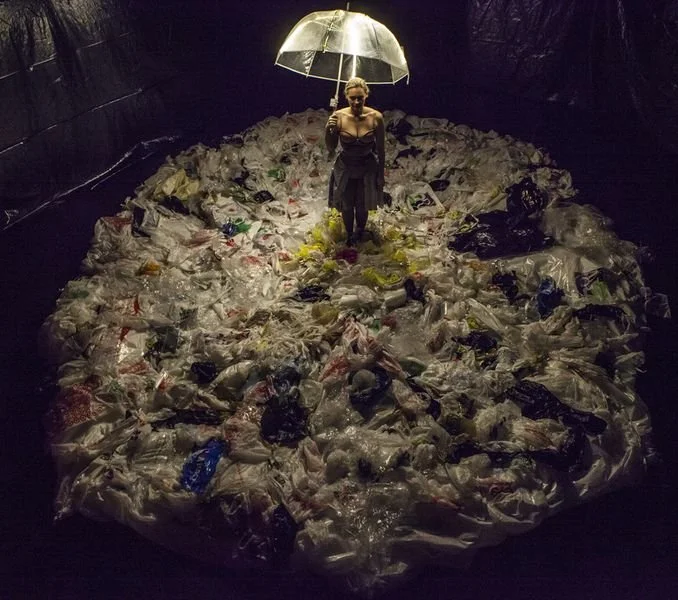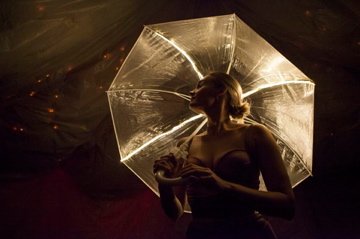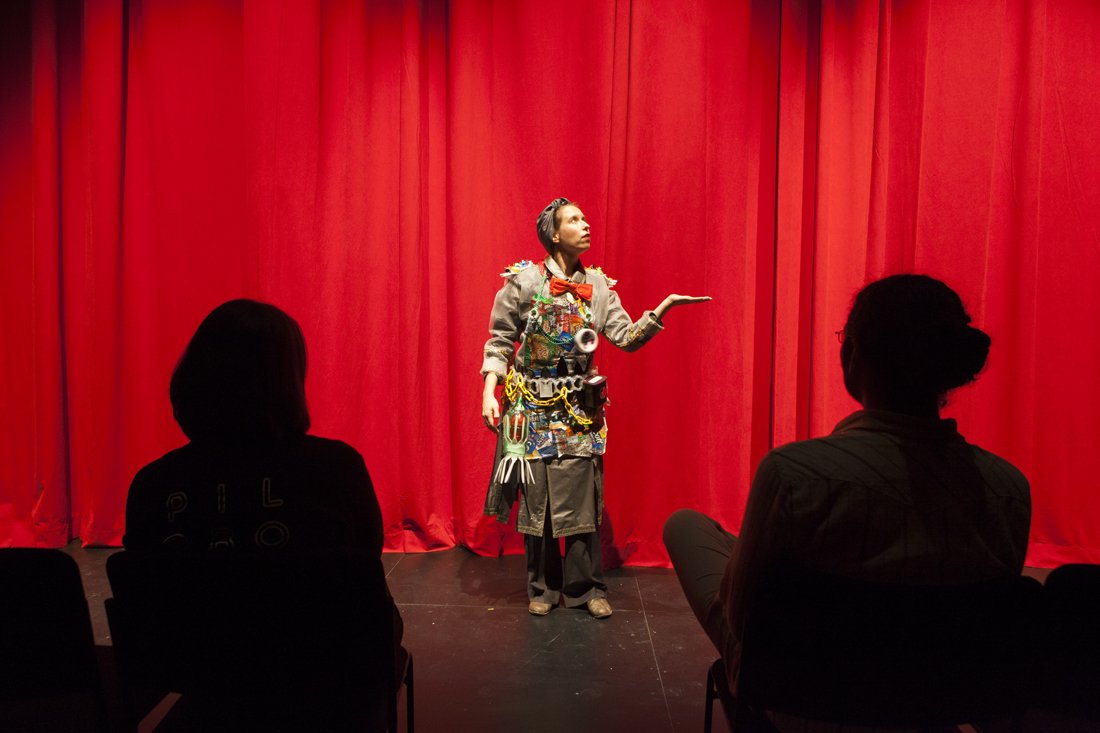PLASTICLAND: A BETTER PLACE is a physical-theater performance that takes place inside a winding, immersive walkthrough installation. The story parallels the ecological disaster of the Great Pacific Garbage Patch with the hidden disconnect between humans and their environment.
A few ambitious elements have been workshopped in front of test audiences (Nov 2013). After which, I realized PLASTICLAND needed a lot more time, money and support to be fully produced. After installed and rehearsed, this production wants multiple performances and a consistent run.
This work is site-specific with no fourth wall. Built into the entire theater, the installation is populated by original set pieces, such as a 20 foot diameter rug made up of recycled plastic trash. The rug transforms into a dress from which Kym performs in the round. The dress becomes a tent which the audience gets under. The canopy of the tent transforms into the night sky. Soundscapes, creative lighting and original music inspire mood and emotion. Themes are supported by audio clips from consummate performers such as Martha Graham and Joe Strummer.
The central focus in PLASTICLAND is the audience’s journey. The performers take care of the audience while encouraging them to take risks and explore the space. In the triumphant finale, the audience is released from their journey into a sparkling world of potential and connection to their place in the universe.
PLASTICLAND is site-specific, exposing the entire theater to the audience and discouraging the usual “Look, but don’t touch” attitude. Audiences adventure through off-limits areas: backstage halls, performer’s sacred dressing space. They cross through the curtain that has divided the performer and audience forever.
The theater is a space taken for granted, imbued with it's own rules. Enter theater/Sit/Read program/Lights down/Show/Lights up/Clap/Exit. PLASTICLAND subverts theatrical expectations. Sacred spaces, like the dressing room, are revealed and invigorated by soundscapes and text. The audience is asked to cross through “The Curtain” and meet the performers onstage, while performing. With only 23 people in the audience, every member is given a chance to be themselves instead of just a face sitting passively in the dark. A groundbreaking new type of audience + performer relationship is established as the show evolves.



